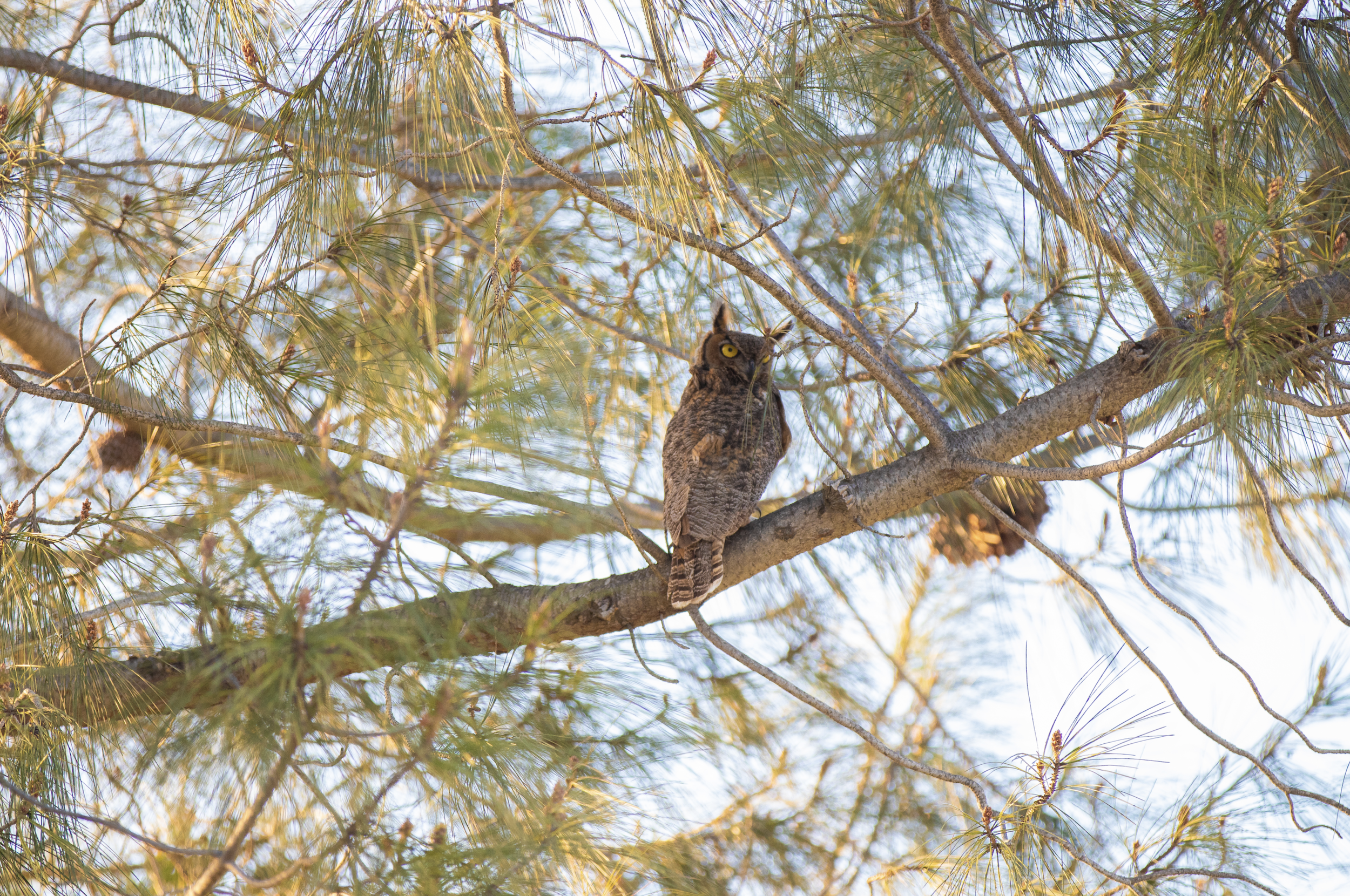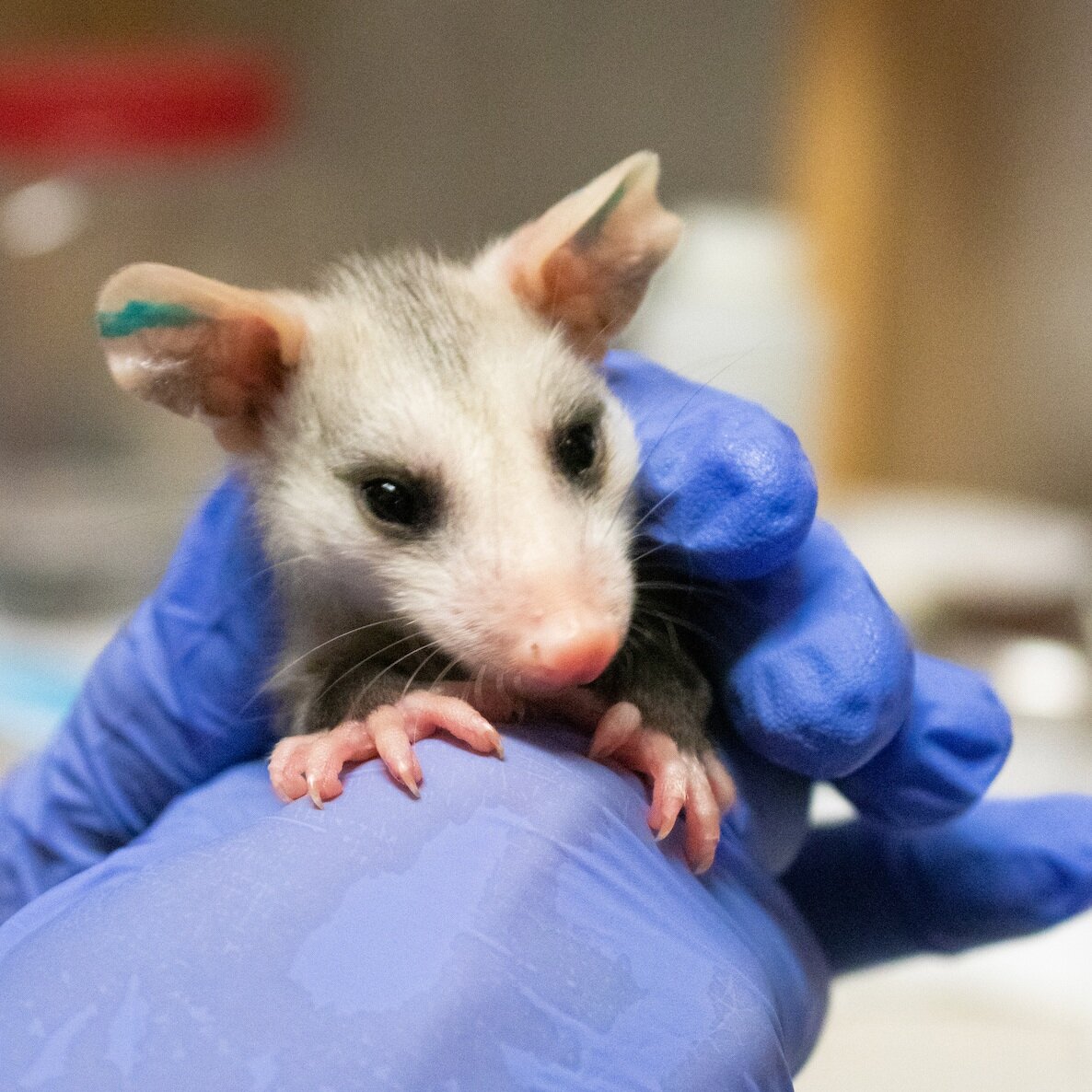
WILDLIFE FAQ
AVIAN INFLUENZA NOTICE: With the recent detection of highly pathogenic avian influenza (HPAI) in California, SBWCN is implementing precautionary protocols to prevent the spread of the virus and to ensure the health of our wild animal patients.
Scroll below to find some helpful tips on living in harmony with wildlife and answers to frequently asked questions.
STILL UNSURE? CALL THE HELPLINE: (805) 681-1080
WHAT TO DO IF YOU FIND A…
BABY BIRD
BABY MAMMAL
RABIES VECTOR
TIPS FOR LIVING IN HARMONY WITH…
GENERAL FAQ
-
No. Unless you are a licensed wildlife rehabilitator, it is illegal to keep a wild animal and attempt to rehabilitate it yourself, even if you plan to release the animal. This animal may need medication, special food, and specific enclosures that we are able to provide.
Some rescuers will attempt to rehabilitate an animal themselves, discover the animal’s health is declining, and bring the animal to a rescue center days later. It is very hard for wildlife professionals to undo the damage done by improper diet and care. The best thing you can do to help a distressed animal is to bring it to a licensed wildlife rehabilitation facility.
It also goes without saying that you may not keep a wild animal as a pet. Not only is it cruel to the animal, but it disrupts the natural balance of the ecosystem.
-
Channel Islands Marine and Wildlife Institute (CIMWI) is the local organization who rescues and rehabilitates marine mammals. If you find a marine mammal:
- Do not touch or harass the injured or stranded animal
- Stay 50 feet away from the animal at all times
- Determine the exact location of the animal. Being accurate is important and making note of prominent landmarks is helpful
- Call the CIMWI Hotline (805) 567-1505
-
While SBWCN is permitted to care for many animals, there are some species we do not accept.
For marine mammals, call Channel Islands Marine and Wildlife Institute: (805) 567-1505
For larger mammals like bears, deer, or mountain lions, call Santa Barbara County Animal Services: (805) 683-2724
For domestic or exotic animal emergencies, call Santa Barbara County Animal Services: (805) 683-2724
-
This is not an indication that the animal is unwell, it could be a mother taking a break from her babies to find food or rest a little. Winter and Spring represent mating months for animals, meaning an increase in activity during the day. If an animal appears alert and active, it is best to leave them alone.
Many seemingly nocturnal animals, like skunks, opossums, and coyotes, are crepuscular, meaning they are most active at dawn and dusk. It is completely normal to see them at these times.
If you believe animal is sick or injured, call the Helpline: (805) 681-1080
-
Live-trapping and relocation is inhumane. If animals are introduced into areas they are unfamiliar with, they do not know where food, water, or shelter sources are. There may be other animals in the area that have diseases to which the introduced animal has never been exposed. The introduced animal may be encroaching on another's territory.
Trapping is only a temporary solution. The reasons animals are visiting your property must be addressed before they stop visiting. If you get rid of one, another will simply take its place.
Traps often do not catch the intended targets. Other animals, including pets, are just as likely to enter traps. Animals caught in traps often injure themselves trying to escape.
-
Each year, hundreds of animals are caught by cats and brought into care at SBWCN. Not only does keeping your cat indoors protect helpless baby birds and animals, but it’s also good for your cat. Statistics show that indoor cats lead longer, healthier lives than outdoor cats. Keeping them indoors protects them from diseases, vehicles, predators, and other environmental hazards. In addition, it’ll prevent them from hunting native wildlife. For more information, click here.
-
SBWCN (805) 681-1080 receives hundreds of orphaned baby animals due to tree trimming each year. To avoid this as much as possible, citizens are advised to trim trees in months that end in the letter “r”. These months avoid the spring and summer months when nests and babies are the most active.
If you do have to trim your trees, here are some helpful tips for spotting nests:
- Look for birds flying back and forth repeatedly. Adults may be gathering nesting material, such as small twigs, feathers, or animal fur. They may also be gathering food, such as bugs or berries. Watch where they fly. If they are flying back and forth to one location, this is likely a nesting area.
- Watch out for aggressive defenders. Male birds are very defensive of nesting territory and their mates, and defensive behavior can indicate a nearby nest. Also watch for female birds guarding the nests.
- Listen for baby bird peeps.
- Squirrel nests are harder to spot. They sometimes look like clumps of leaves on branches or can be hidden inside the cavity of a tree.
- If you find a nest and still think the tree should be trimmed, please call the Helpline for advice: (805) 681-1080
For more information, click here.
-
Gophers and rabbits are the most common animals to utilize gardens as a food source. To deter them, try:
- Dog hair in a mesh bag
- Critter Ridder or Shake-away
- Cayenne pepper
- Ammonia soaked rags. Note: do not throw these into a den while the animal is in there – there may be babies!
Opossums and skunks are actually friends of your garden! Opossums eat over 1,000 ticks, slugs, and snails per month. Skunks also eat many garden pests, like snails, slugs, and mice.
-
- Change your trash day habits. Place your trash outside the morning of pick-up instead of the night before. Double-bag your trash. Place your bags inside of a trash bin. Secure trash bin lids with a bungee cord or place a weight on top.
- Properly store your trash bins. Place them in a protected area or secure them to your home or garage. Place them on level ground where they cannot be tipped over as easily. Place them in the line of sight of a spotlight or motion-detecting light.
- Use animal repellent. Repellents use scent, taste, or a combination of both to drive animals away from the protected area. Sprinkle granular animal repellent around the area where trash cans are stored. Additionally, spray a liquid animal repellent directly onto trash bags, trash cans, or recycling bins as you place them curb-side. Humane options include cayenne pepper, Critter Ridder, and Shake-away.
-
In summer and fall, skunks and other mammals may dig holes in lawns. To mitigate this, first identify the problem.
If there are sources of food, water or shelter, this will attract animals to your lawn. If possible, eliminate or block off these food, water, or shelter sources.
- Examples of food sources: pet food, seeds from bird feeders, fruit on fruit trees (tip: band fruit trees with sheet metal to prevent climbing animals)
- Examples of water sources: leaky pipes and hoses, pet water bowls, ground-level bird baths, koi ponds
- Examples of shelter sources: wood piles, shrubberies close to the ground, things that aren’t moved regularly (cars, boats, covered RVs, piles of junk)
If you have animals like skunks or gophers digging holes in your lawn, try using animal repellent. Humane options include cayenne pepper, Critter Ridder, and Shake-away.
If you see squirrels burying nuts in your yard, don’t be too worried; these holes are normally shallow and cannot cause too much damage.
-
Cayenne Pepper: Sprinkle around holes or frequented spaces.
Homemade pepper spray: Boil several hot peppers, an onion, and one tablespoon of cayenne pepper in 2 quarts of water for 20 minutes. Strain the liquid and spray it around trash cans, plants, flower beds, tree trunks, and the outside of buildings. Not only is there an unpleasant odor to this mixture, but it is uncomfortable on raccoons’ paws and they will learn to stay away. The effects of this spray are temporary, so you’ll need to reapply it every 2 or 3 days—or after any rain. (source)
-
SBWCN has partnered with a local woodworker for custom-made owl boxes, with a portion of proceeds benefiting SBWCN. These boxes are made-to-order at $180 and take 2-4 weeks for production. Delivery and installation are available for an additional cost within Santa Barbara County. For more details, contact Jonas at (805) 621-4592.









